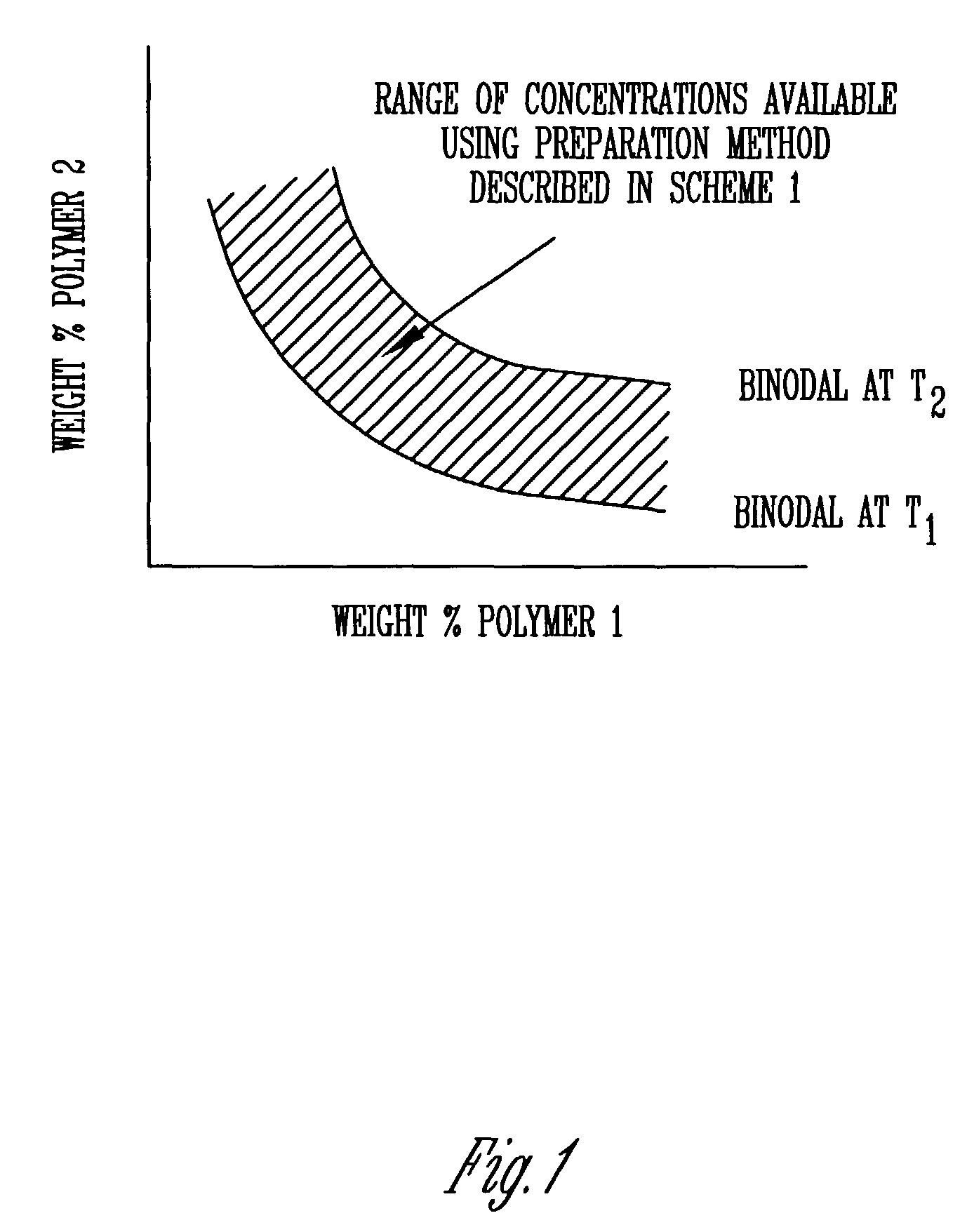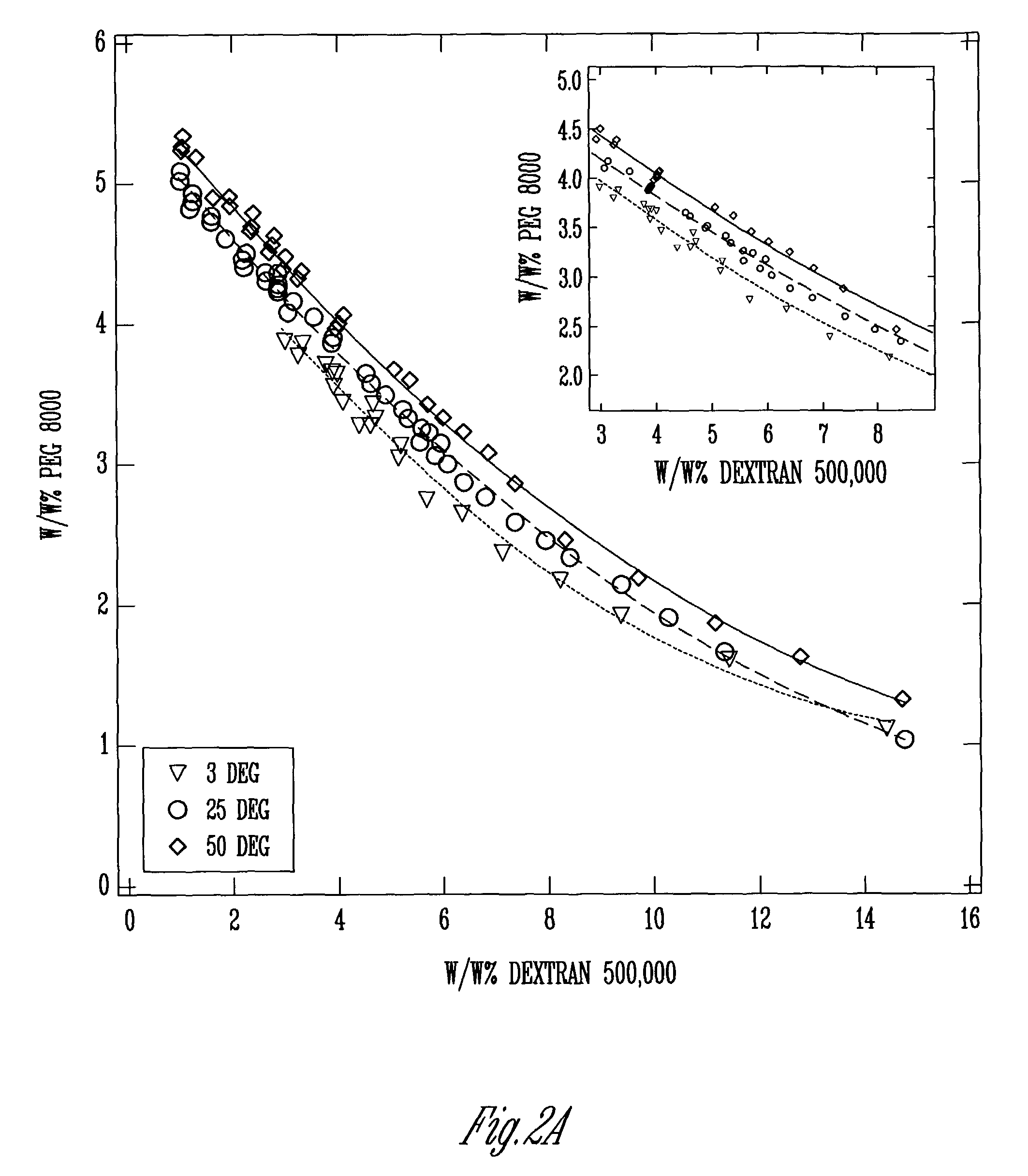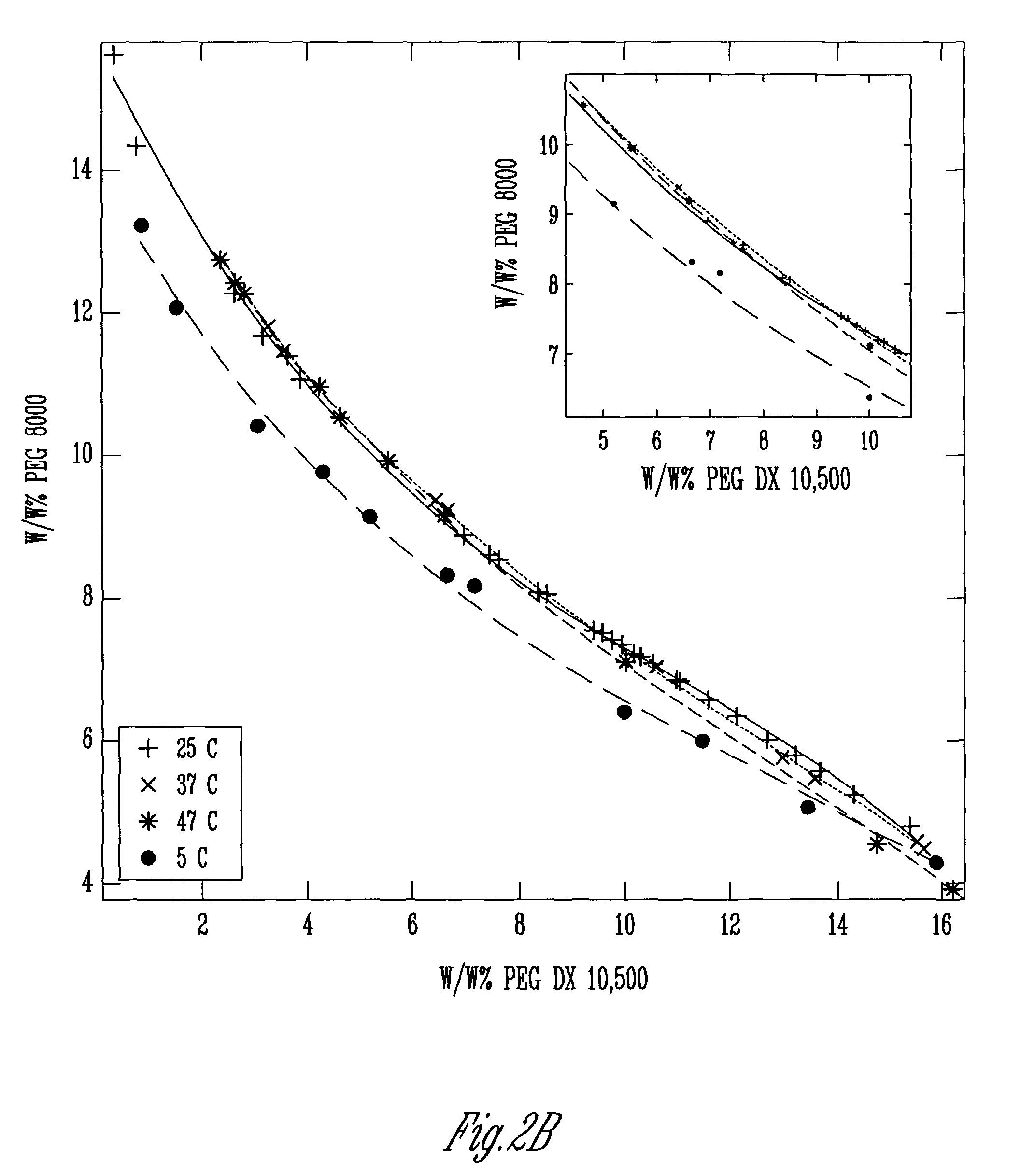Encapsulation of aqueous phase systems within microscopic volumes
a technology of aqueous phase systems and microscopic volumes, which is applied in the direction of microcapsules, capsule delivery, separation processes, etc., can solve the problems of affecting the dimensionality of assemblies, the difficulty of organizing micro- and nanostructures into functional materials with addressable micro-nanoscopic components, and the crudeness of most manufactured articles. achieve the effect of high ionic strength
- Summary
- Abstract
- Description
- Claims
- Application Information
AI Technical Summary
Benefits of technology
Problems solved by technology
Method used
Image
Examples
example 1
Preferred Method of Preparing of APTS Vesicles
[0103]For each experiment, the APTS was made fresh immediately prior to its incorporation into the phospholipid vesicles. On average, 6.0 g of the ATPS was prepared for use in an experiment. In a clean vial, 0.225 g PEG 8000 was combined with 0.270 g dextran 500 and mixed until the polymers dissolved. The solids were hydrated with the addition of 5.505 g of water. This mixture was stirred for 30 minutes at room temperature before being heated to 50° C. Once at this temperature, the solution was cooled to room temperature and the layers were first allowed to separate. The solution was again heated to 50° C. and thoroughly mixed before incorporation into the vesicles.
[0104]To incorporate into the vesicles, 990 μl of the above ATPS was added to a small flask along with 10 μL of 0.1% w / w FITC-Dextran 500 (in 0.1% w / w dextran 500). This solution was heated to 50° C. and mixed before being pipetted into the flask containing the dried lipid fil...
example 2
Method for Improving Partitioning after GUVs are Prepared
Encapsulation-Addition of Sucrose
[0105]The goal of the partitioning experiments was to determine conditions for biomolecules to have maximum partitioning into one phase in order to encapsulate the system within a liposome and control the localization of the molecule. Due to the fact that it is necessary to choose a polymer system close to the binodal in order for phase separation to occur at reasonable temperatures, partition coefficients were not as one-sided as hoped, even in the presence of salt. If K=1 for a certain biomolecule, when partitioned, it is expected that both phases inside the liposome would fluoresce equally. In the inventors' lipid system, the concentration of salt is also a limitation to encapsulation. In some cases, with this particular liposome preparation, liposomes will not form in the presence of 50 mM (or above) salt. Because of this, another method was used in order to improve partitioning and separat...
example 3
Encapsulation of Biomolecules
[0124]It is expected that fluorescently-labeled polymers would partition into their respective phases. In order to see the effects of chemical reactions within a crowded, confined environment, the partitioning of biomolecules involved was first investigated. The two DNA strands had the best partitioning of the biomolecules studied. All experiments were performed in the absence of salt. In photographs taken under an optical microscope of the encapsulated 88-base oligonucleotide, the partitioning is easily visible and the two phases can be distinguished. As expected the DNA partitions into the outer dextran-rich phase. The 12-base oligonucleotide follows the same trend. These images show the creation of microcompartmentation of biomolecules within synthetic cells, mimicking the conditions created by the cytoplasm in living cells.
[0125]The intensity of fluorescence versus position was graphed. This quantitative data was used to calculate an approximate part...
PUM
| Property | Measurement | Unit |
|---|---|---|
| Diameter | aaaaa | aaaaa |
| Surface energy | aaaaa | aaaaa |
| Temperature | aaaaa | aaaaa |
Abstract
Description
Claims
Application Information
 Login to View More
Login to View More - R&D
- Intellectual Property
- Life Sciences
- Materials
- Tech Scout
- Unparalleled Data Quality
- Higher Quality Content
- 60% Fewer Hallucinations
Browse by: Latest US Patents, China's latest patents, Technical Efficacy Thesaurus, Application Domain, Technology Topic, Popular Technical Reports.
© 2025 PatSnap. All rights reserved.Legal|Privacy policy|Modern Slavery Act Transparency Statement|Sitemap|About US| Contact US: help@patsnap.com



